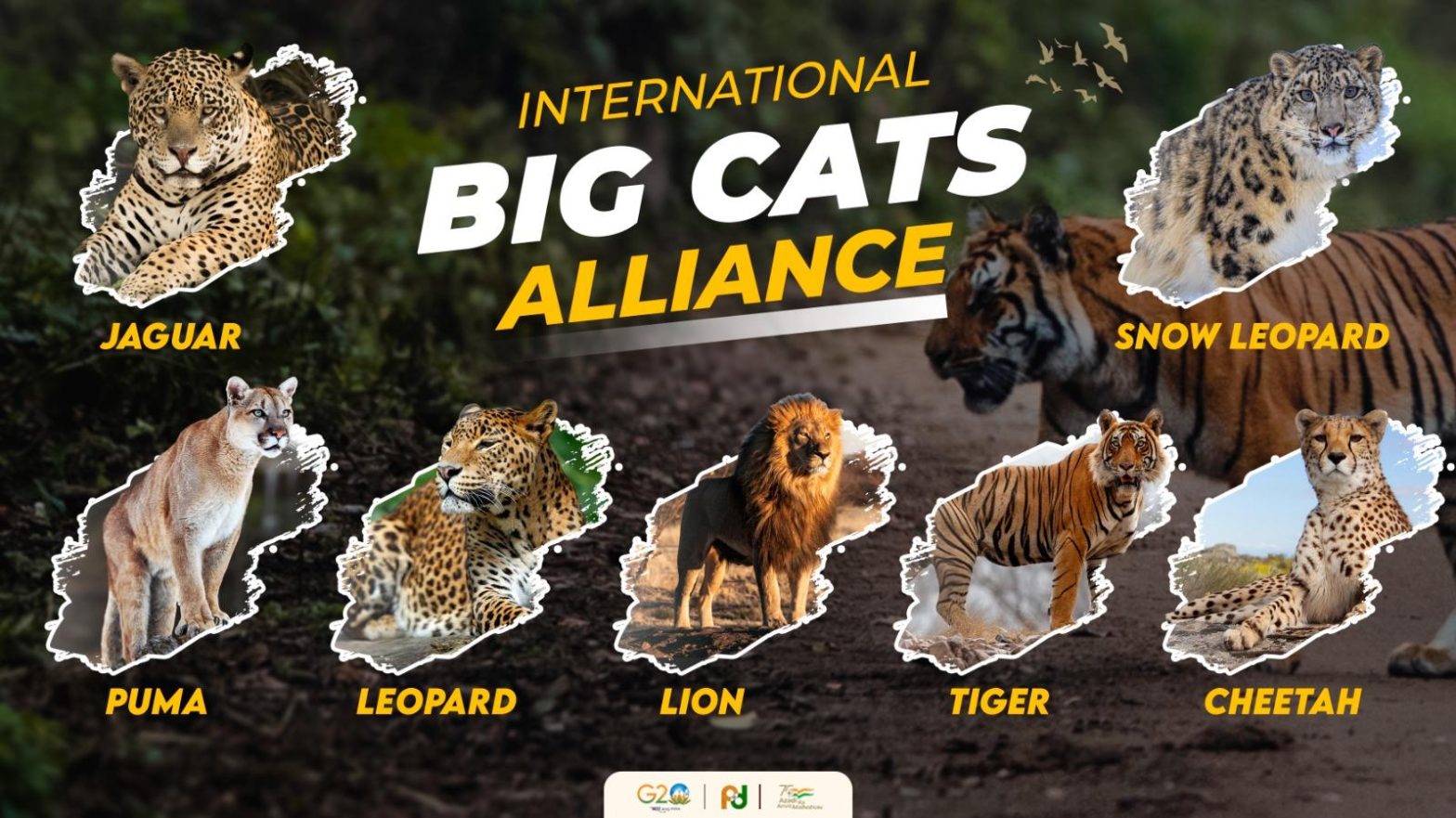Context:
The first Assembly of the IBCA was recently convened in New Delhi, where Environment Minister Bhupender Yadav was unanimously endorsed as the first President of the IBCA by representatives from nine founding countries.The Assembly ratified the Headquarters Agreement, officially establishing IBCA’s base of operations in India, along with affiliated regional offices in future member states.
About IBCA:
· The IBCA was launched by Prime Minister Narendra Modi on April 9, 2023, during an event commemorating the 50th anniversary of Project Tiger.
· The initiative’s main objective is the conservation of seven major big cat species: the Tiger, Lion, Leopard, Snow Leopard, Cheetah, Jaguar, and Puma.
· In a cabinet meeting on February 29, 2024, the government officially approved the establishment of the IBCA, with its headquarters based in India.
· The establishment of the IBCA was spearheaded by the National Tiger Conservation Authority (NTCA), a nodal organization under the Ministry of Environment, Forest & Climate Change (MoEFCC).
· The membership of the IBCA is open to all UN member countries, especially those that host these species, and to non-range countries that are interested in supporting big cat conservation efforts. Out of 95 range countries globally, 25 countries had formally joined IBCA as of September 2024.

Why was the IBCA created?
The IBCA was created to:
- Address the rising threats to big cats globally.
- Consolidate conservation efforts and share best practices.
- Enable collaborative research, capacity building, and funding support.
- Safeguard ecosystems through apex predator protection.
Functions of the IBCA:
· Collaboration among countries for conservation strategies.
· Technology sharing, research, and data exchange.
· Financial support for member nations.
· Anti-poaching coordination and training.
· Promoting eco-tourism and sustainable development.
· Monitoring big cat populations across borders.
Big Cats under Protection & Their Conservation Status
|
Big Cat Species |
Scientific Name |
IUCN Status |
CITES Status |
Wildlife Protection Act, 1972 (India) |
|
Tiger |
Panthera tigris |
Endangered |
Appendix I |
Schedule 1 |
|
Asiatic Lion |
Panthera Leo persica |
Endangered |
Appendix I |
Schedule 1 |
|
Leopard |
Panthera pardus |
Vulnerable |
Appendix I |
Schedule 1 |
|
Snow Leopard |
Panthera uncia |
Vulnerable |
Appendix I |
Schedule 1 |
|
Cheetah |
Acinonyx jubatus |
Vulnerable |
Appendix I |
Schedule 1 |
|
Jaguar |
Panthera onca |
Near Threatened |
Appendix I |
Not found in India |
|
Puma |
Puma concolor |
Least Concern |
Appendix I |
Not found in India |
Conclusion:
The IBCA has the potential to make a significant impact on big cat conservation globally. With its comprehensive approach and collaborative framework, the alliance can help protect these magnificent creatures and their habitats for future generations.






